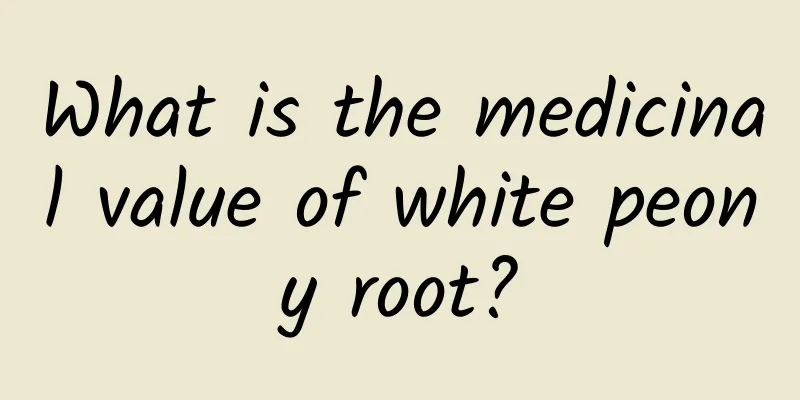The efficacy and function of yellow tea root

|
Yellow tea root is a traditional Chinese medicine. In addition to the effects we know in daily life, yellow tea root actually has many other effects and functions. Let’s take a look at them right away. [Alias] Daughter tea, rock fruit purple, daughter red, purple fruit leaf. [Source] Medicinal material source: the roots, branches and leaves of Rhamnaceae. [Original form] Buckthorn shrub, 1.5-2m high. The branches are thornless, much branched, with slender twigs and dense short soft hairs. Leaves are alternate; petioles are 2-7mm long and pubescent; stipules are small, subulate or linear, persistent; leaf blades are papery, of varying sizes, leaflets are nearly circular or ovate, 0.5-1.5cm long, with rounded or obtuse apex; large leaves are oblong, ovate-elliptical or ovate-oblong, 1.5-4.5cm long, 1-2.2cm wide, with acute or short acuminate apex, with a small tip, cuneate or rounded base, finely serrated margin, light green above, and tufted hairs on the midrib below. The flowers are unisexual, dioecious, solitary or clustered in 2-3 in leaf axils, yellow-green, with 5-lobed calyx, and the lobes are sparsely pubescent on the outside; the male flowers have 5 petals, spoon-shaped, slightly concave at the apex, with reduced pistils, rudimentary ovary, and 3-cleft style; the female flowers have small petals, 2-lobed, and fall off early, the ovary is spherical, 3-chambered, and the style is short and 3-cleft. The drupe is spherical, with a persistent calyx tube at the base, black when ripe, and with 3 cores. Seeds have longitudinal grooves on back and are ovate. The flowering period is from May to August, and the fruiting period is from September to December. [Habitat distribution] Ecological environment: Growing on hillsides, thickets and forest edges at an altitude of 300-1450m. [Chemical composition] The branches and leaves contain emodin, frangulin A, and kaempferol; the rhizomes contain NLC-A, with a relative molecular mass of 1.2×10(4), and a structure of a glucan with α(1→4)-D-glucose residues as the main chain and branches at positions 0-6. 【Nature and flavor】 Astringent; slightly bitter; cool 【Functions and indications】 Clears away heat and detoxifies; cools blood and stops bleeding. It is used for dysentery, carbuncle, hematemesis, hemoptysis, hemorrhoidal bleeding, metrorrhagia, leucorrhea, summer heat and thirst [Usage and Dosage] For oral use: decoction, 10-30g; fresh product 30-60g. 【Excerpt】 Chinese Materia Medica The above is a brief introduction to the effects of yellow tea root. I hope it can help all my friends. In general, the health-preserving effects of yellow tea root are very powerful. Therefore, yellow tea root can be used in daily life to better promote physical health. |
<<: The efficacy and function of locusts
>>: The efficacy and function of Cotoneaster chinensis
Recommend
It’s really terrible: Not everyone can collect nectar from this common little flower!
Welcome to Northern Plants. Today I’d like to int...
Every time a bunch of bananas is picked, a banana tree dies?
gossip "For every bunch of bananas picked, a...
13 billion liters of water disappeared? Freshwater lake suddenly turned into saltwater lake? What happened?
At the end of the last century, Lake Pinnell in L...
The efficacy and function of Scopolamine root
Traditional Chinese medicine requires the use of ...
What are the effects of Renqing Mangjue?
Traditional Chinese medicine has developed from t...
The efficacy and function of wild tea
Wild tea can mainly achieve the effect of clearin...
Who should drink Astragalus extract?
Everyone knows that Astragalus is a common Chines...
Why did the world's only confirmed 8th-century Persian brocade appear in Qinghai, China?
Even in the Qinghai-Tibet Plateau, the "thir...
An unexpected discovery shocked scientists: How cool can atoms be?
I believe that in the previous article "You ...
What are the effects of Chuanxiong and Angelica dahurica
Chuanxiong is a kind of Chinese herbal medicine, ...
To survive in a sea of fire, what tricks do plants have?
Last year, the Amazon rainforest fire burned 500,...
Four scientists "took a backdoor" and wanted 200 million yuan, but unexpectedly received more than 10 billion yuan, thus starting a decisive battle for China's destiny!
In March 1986, four scientists, Wang Daheng, Wang...
Seeing the "anonychia" hand reminded me of Voldemort's nose...
What do you think of when you think of people wit...
If you walk early as a child, will you be more likely to have sensory integration disorder when you grow up? Doctors answer...
gossip "If you walk early as a child, you ar...









